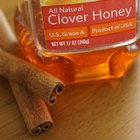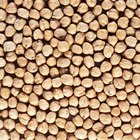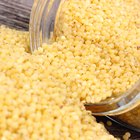
It's too late to fix cookies or cakes with a bitter flavor once you've baked them, but you can make some changes to raw dough to neutralize baking soda. Your secret weapon is any ingredient that contains acid, such as cream of tartar or molasses. Even a little lemon juice will do the trick.
A Chemical Reaction
Baking soda, or sodium bicarbonate, is an alkaline substance derived from the ore, trona. It naturally has a soapy, bitter taste. To neutralize the bitter taste, you must combine baking soda with an acidic ingredient, such as buttermilk, lemon juice, applesauce, brown sugar, molasses, yogurt, sour cream, cream of tartar or natural cocoa powder. These ingredients neutralize the bitter taste in baking soda and also cause a chemical reaction that encourages more carbon dioxide bubbles, and in turn, make the baked good rise more.
Altering a Recipe
To counteract a bitter taste in baked goods made with baking soda, you can add acidic ingredients along with the baking soda. Be careful not to add too much, especially in the case of buttermilk or other liquids, which can change the consistency of the batter. The simplest solution is to add some cream of tartar along with the baking soda. The cream of tartar neutralizes the bitter flavor, but doesn't change the basic character of the baked good. Sprinkle the cream of tartar over the dough and mix it in thoroughly.
Only a Little
Even when you add an acidic ingredient, baking soda may still leave a bitter taste if you use too much. Use baking soda at a rate of 1/4 teaspoon per 1 cup of flour in baked goods. If you use more, the baked good may raise too much and later deflate. It may also brown more quickly. When adding baking soda to a baked good, sift the baking soda into the flour before you add it to the wet ingredients. If you add it directly to the wet batter, it may form small, undissolved clumps. Bite into one of these clumps and you'll get a nasty surprise.
The Right Leavener
For best results, use the leavener the recipe calls for. Some baked goods don't contain acidic ingredients and they'll have a bitter taste if you use baking soda. In this case, the recipe will call for baking powder instead. Baking powder is a combination of baking soda and an acidic ingredient, such as cream of tartar, and cornstarch to absorb moisture. Because baking powder already contains an acidic ingredient, you can safely use it in almost any recipe. Baking powder is less potent than baking soda because it contains other ingredients. Use it at a rate of 1 teaspoon baking powder for each 1 cup of flour.
Related Articles

How to Make Your Own Cocoa Scrub

How to Use Honey & Cinnamon to Treat ...

How to Make a Lip Mask for Extremely ...

How to Clean Scuffed Up Rain Boots

Homemade Facials to Clear Blemishes
How to Mix Baking Soda & Peroxide

How to Replace Eggs With Mayonnaise

How to Make Body Oil With Glycerin

Can Baking Soda Help Chapped Lips?

How to Locate a Missing Person in ...

Can I Make Doughnuts From Frozen Yeast ...

How to Make Creamy Alfredo Sauce With ...

How to Make Really Good Lemonade

Will Adding Cocoa Powder to a Cake Dry ...

How to Roast Chickpea Flour

How to Ferment Whole Grains

How to Make Anti-Wrinkle Moisturizing ...

How to Substitute Cocoa Powder for ...

What Is a Substitute for Potassium ...

How to Convert Men's Clothing Sizes to ...
References
- The Art & Soul of Baking; Cindy Mushet
- King Arthur Flour: The World of Leaveners
Writer Bio
Julie Christensen is a food writer, caterer, and mom-chef. She's the creator of MarmaladeMom.org, dedicated to family fun and delicious food, and released a book titled "More Than Pot Roast: Fast, Fresh Slow Cooker Recipes."
Photo Credits
Dick Luria/Photodisc/Getty Images